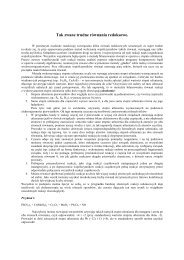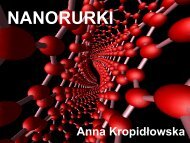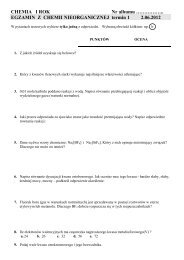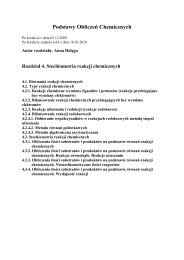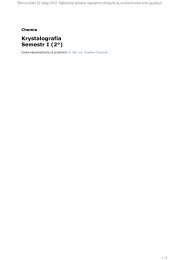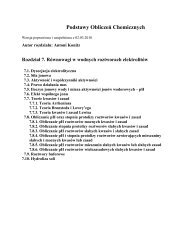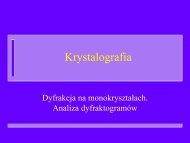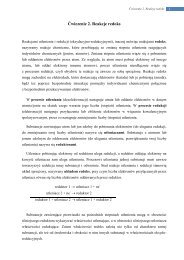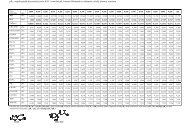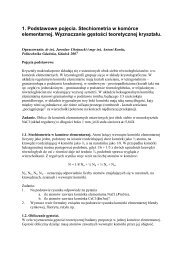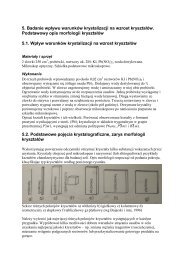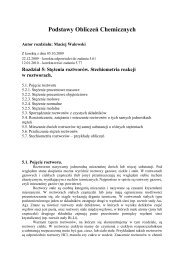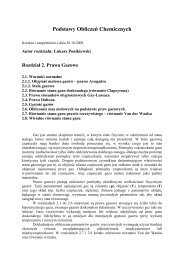KWASY I ZASADY - Katedra Chemii Nieorganicznej
KWASY I ZASADY - Katedra Chemii Nieorganicznej
KWASY I ZASADY - Katedra Chemii Nieorganicznej
You also want an ePaper? Increase the reach of your titles
YUMPU automatically turns print PDFs into web optimized ePapers that Google loves.
Bardzo ważnym wkładem Lowry'ego w omawianą teorię jest określenie<br />
stanu jonu wodorowego w roztworze.<br />
(Brønsted, ogłaszając swoją teorię, użył H + .)<br />
T. M. Lowry, "The Uniqueness of Hydrogen" Chem. Ind. 42 (1923) 43-47)<br />
Znajdziemy tam zapis H 3<br />
O + , tak jak to formułujemy dzisiaj.<br />
Cytat z tej pracy:<br />
"It is a remarkable fact that strong acidity is apparently developed only in mixtures<br />
and never in pure compounds. Even hydrogen chloride only becomes an acid when<br />
mixed with water. This can be explained by the extreme reluctance of a hydrogen<br />
nucleus to lead an isolated existence.... The effect of mixing hydrogen chloride with<br />
water is probably to provide an acceptor for the hydrogen nucleus so that the<br />
ionisation of the acid only involves the transfer of a proton from one octet to another.<br />
ClH + H 2<br />
O ⇔ Cl– + OH 3<br />
+<br />
(Lowry napisał to równanie ze wszystkimi<br />
kropkami oznaczającymi elektrony, by wskazać<br />
pełne oktety elektronowe.)<br />
The ionised acid is then really an ionised oxonium salt."



